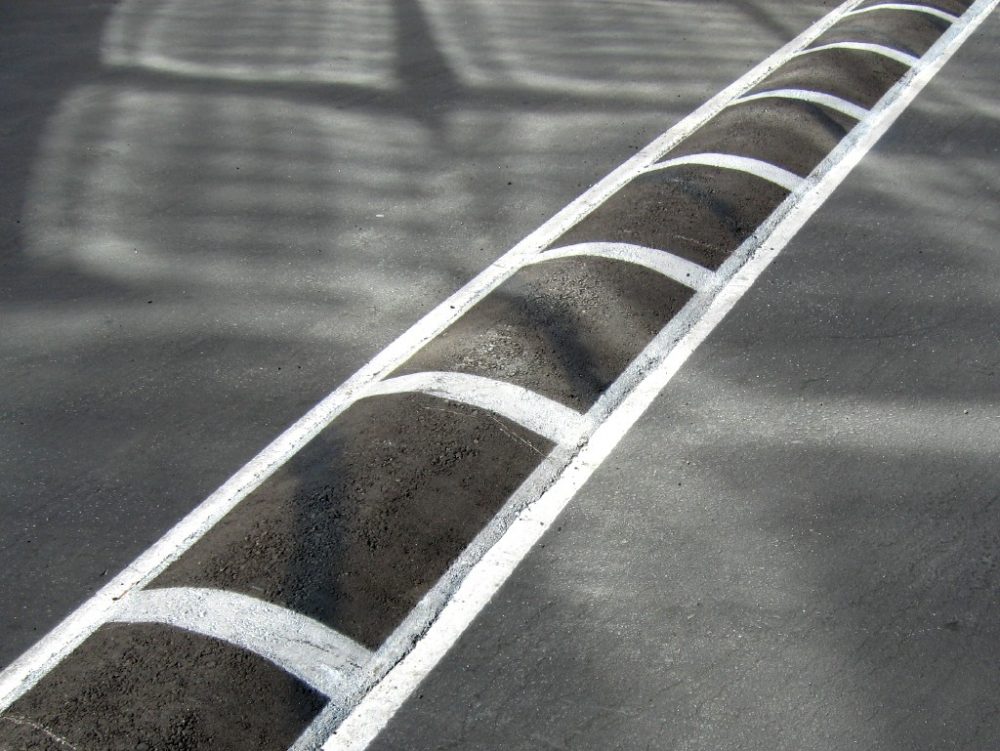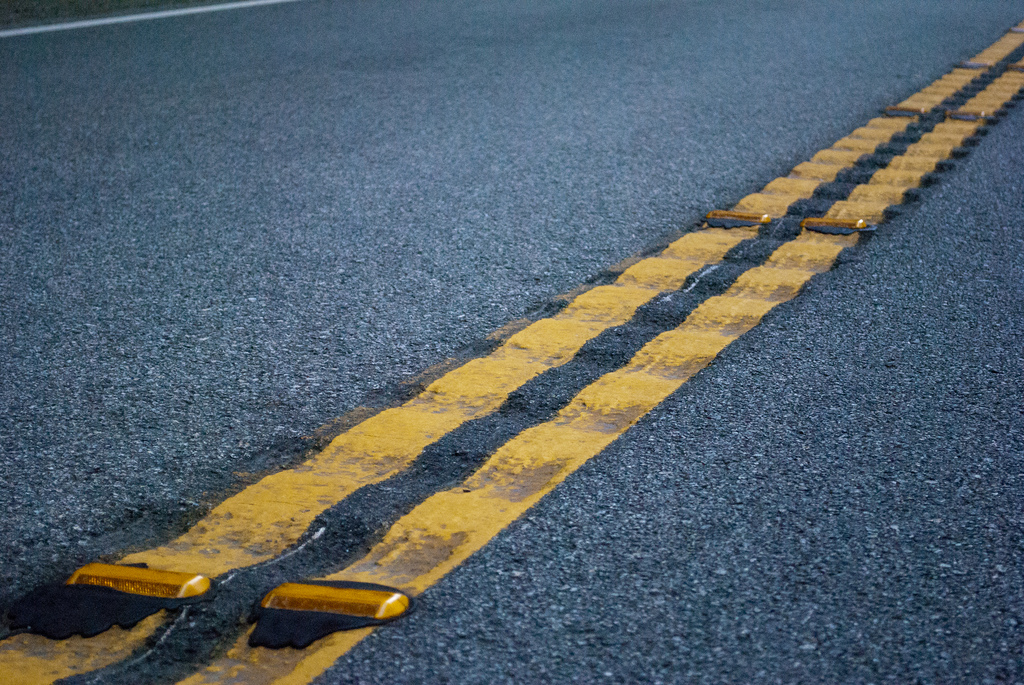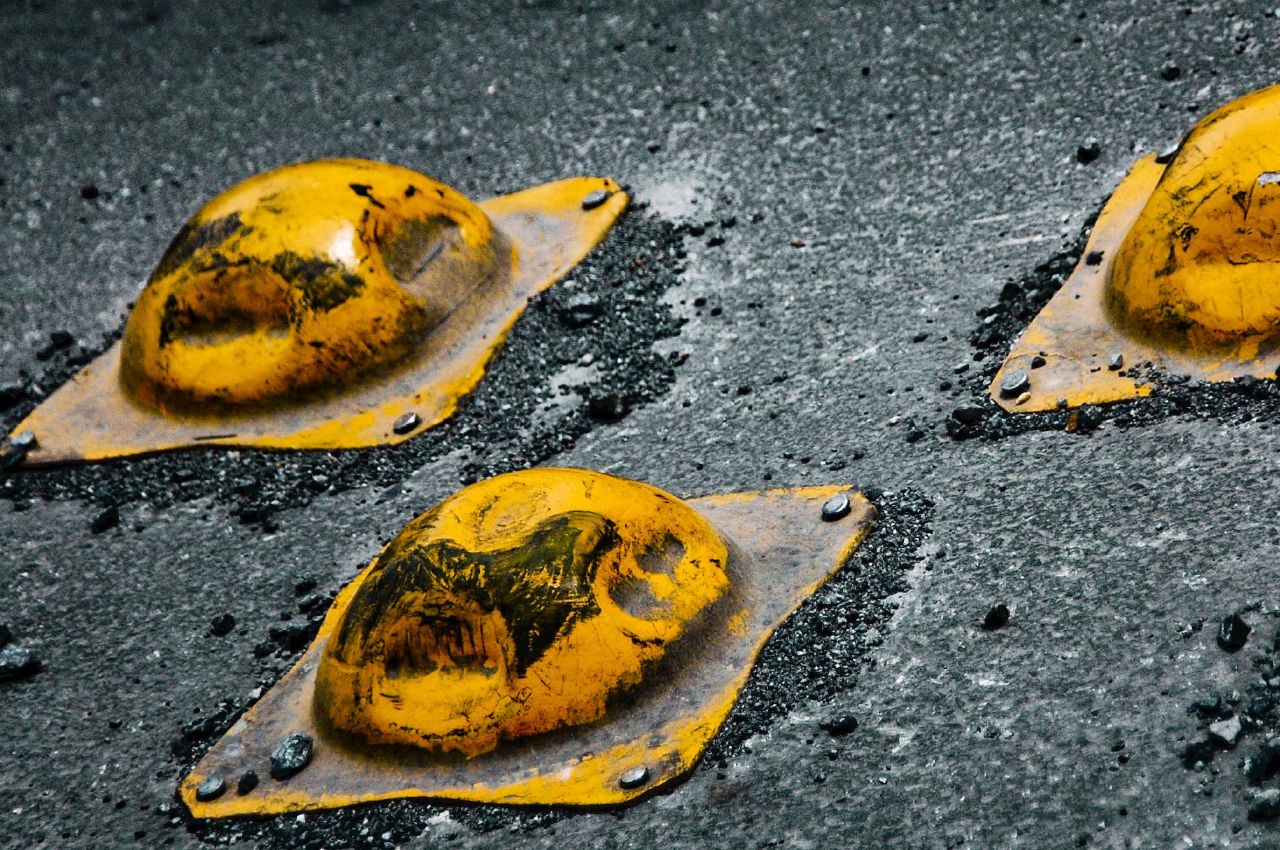Speed bumps and rumble strips are two forms of “traffic calming devices” you’ll commonly encounter on the road. As a driver, it’s a scary feeling when your car jolts, bumps, shakes, or scrapes when passing over these. Your reaction is probably to cringe and wonder, “I hope that didn’t damage my car!” But could these traffic management methods cause permanent damage?
Worried About Damaging Your New Car? You might want to consider gap insurance

Photo: atomicity via CC
First of all, although the terms are often used interchangeably, there’s a difference between speed bumps and speed humps. As explained by the Reliance Foundry, speed humps are wider than bumps, inclining at a lower angle, and are half the height. They compel drivers to slow down rather than almost stopping completely as speed bumps do.
Speed bumps are raised 3-4 inches above the road and are intended to reduce driving speeds to under 10 mph. They’re often installed in areas with high pedestrian traffic, such as residential communities and parking lots, rather than public roads like speed humps are.
Speed bumps compel drivers to come to a near-stop, creeping over to avoid damaging the bumper, undercarriage, and possibly steering rack. Taken too fast, a speed bump will scrape or ding the underside and may result in dents or leaks.
Critics have raised concerns over the use of speed bumps:
- Damage caused to emergency vehicles when crossed at high speeds
- Low-riding vehicles scraping the bump, even at low speeds
- Braking/re-accelerating lowers fuel efficiency and increases emissions
- Interruptions to the steady flow of traffic
However, as evidenced by extensive studies (such as a Portland Bureau of Transportation study that found a 39 percent decrease in crash frequency on roads with speed bumps), the benefits outweigh any damages.
Helpful Advice: Read useful tips for young drivers

Photo: Zaheer Mohiuddin via CC
Rumble strips have a different purpose than speed bumps. These grooved strips of pavement are designed to alert distracted drivers rather than affect the speed of a vehicle. They catch attention through tactile vibrations and audible rumbling as the wheels of the car come in contact with rapid, inch-deep grooves in the road.
These have been proven to be very effective in alerting drowsy or distracted drivers while causing very minimal damage to their vehicles. Rumble strips could technically tear up your tires and suspension if you drive hundreds of miles on them regularly, but most stretches last under a mile in construction areas or exit ramps. Thus, it’s no worse than wear and tear endured by your car on a daily basis.

Photo: Brian via CC
Many sources say that crossing rumble strips or speed bumps won’t damage your car — as long as you drive over them properly and your vehicle’s ground clearance isn’t unusually low. So, they feel a lot worse than they actually are.
Damage that could be sustained by your car would be primarily due to pre-existing bodywear that the bumps only exacerbate (such as a weak suspension, bad alignment, or cracked tires) or crossing over them too fast. According to the Tri-State Transportation Campaign, for a city to be liable for damage done by a traffic calming device, it would have to be proved that the device was improperly constructed or hazardously designed.
If you cross these obstacles on a frequent basis, however, long-term damage to your car’s alignment, shocks, struts, and joints could be caused over time, so avoid these areas if possible during daily commutes.
Aaron is unashamed to be a native Clevelander and the proud driver of a Hyundai Veloster Turbo (which recently replaced his 1995 Saturn SC-2). He gleefully utilizes his background in theater, literature, and communication to dramatically recite his own articles to nearby youth. Mr. Widmar happily resides in Dayton, Ohio with his magnificent wife, Vicki, but is often on the road with her exploring new destinations. Aaron has high aspirations for his writing career but often gets distracted pondering the profound nature of the human condition and forgets what he was writing… See more articles by Aaron.



